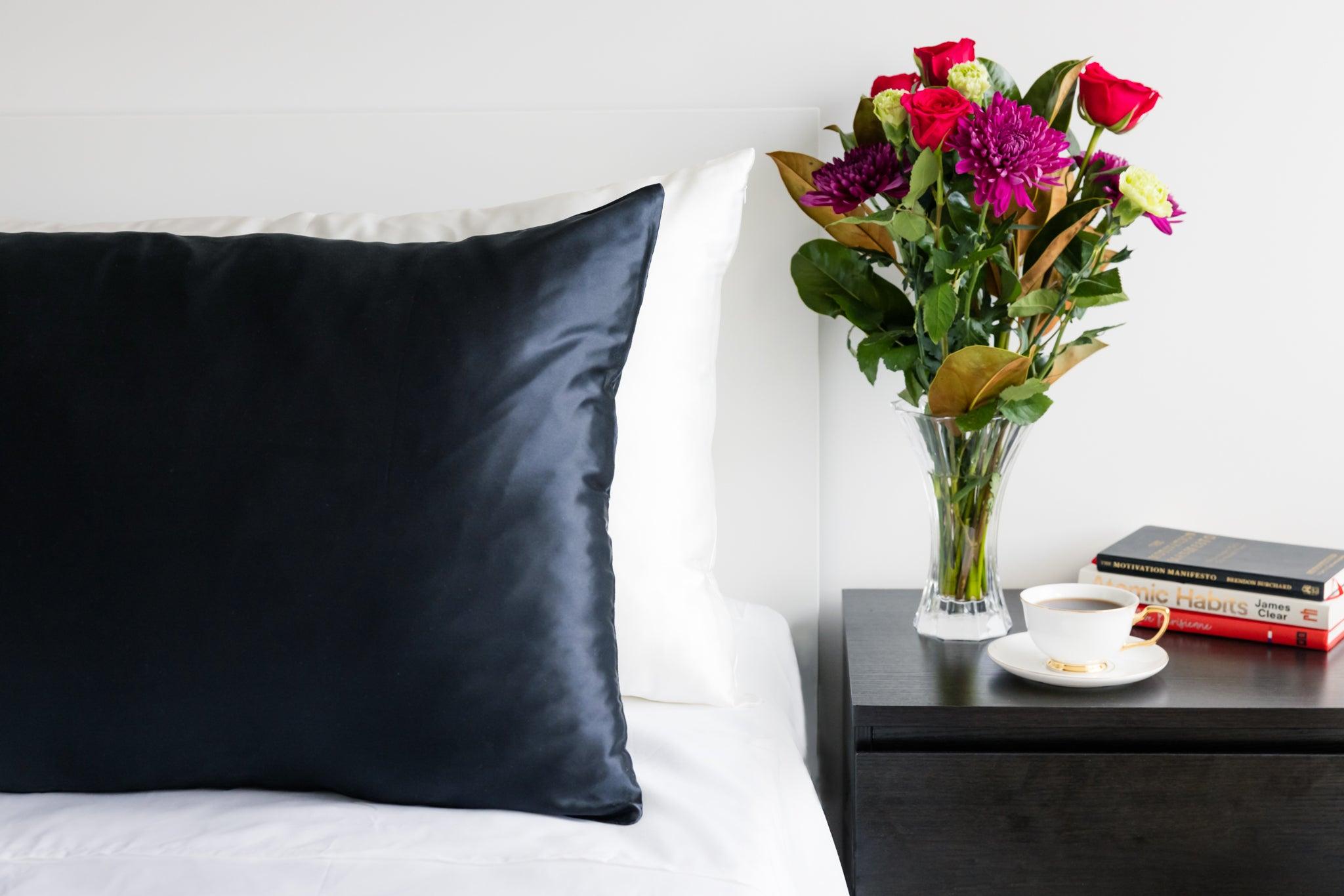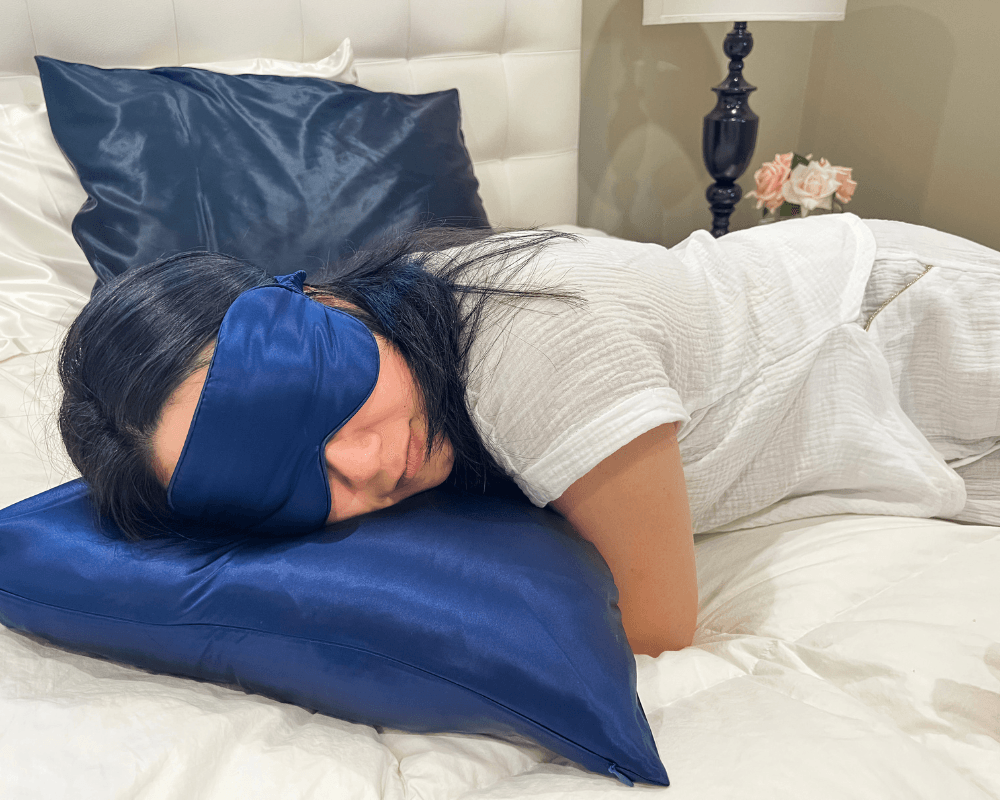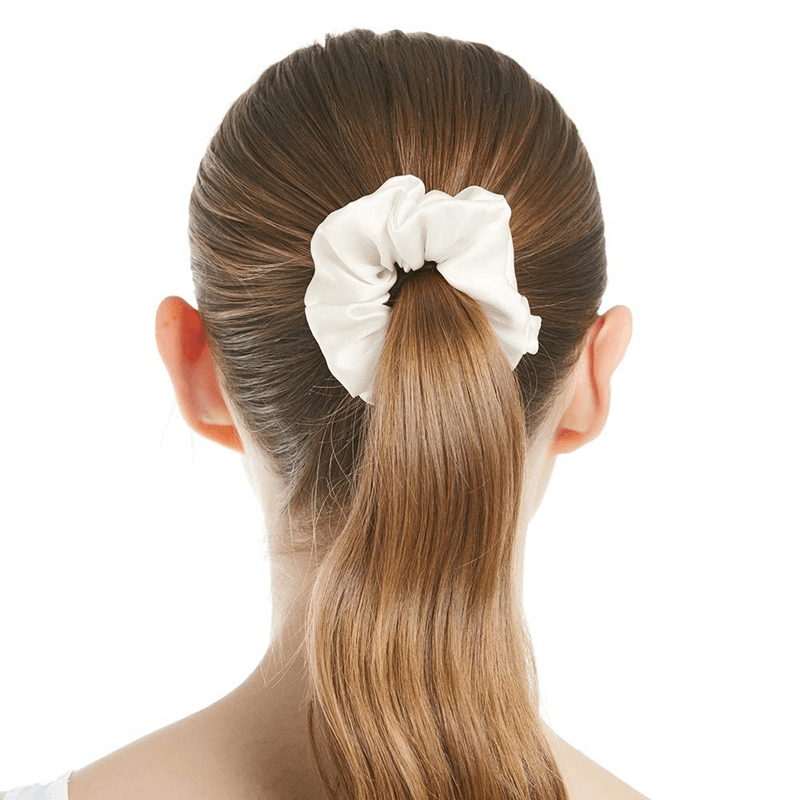When it comes to achieving a good night's sleep, the fabric you choose for your bedding plays a significant role in ensuring your comfort and overall well-being. Two popular choices that often come to mind are silk and satin. These luxurious materials are not only comfortable but also offer various benefits for your skin and hair.
The Elegance of Silk

Silk, derived from the cocoons of silkworms, is renowned for its soft, smooth, and lustrous texture. It has been coveted for centuries for its luxurious feel against the skin and its ability to regulate body temperature. Here are some key reasons why silk is an excellent choice for achieving the beauty sleep you've always dreamt of:
-
Unparalleled Smoothness Silk's fine and tightly-woven fibers create an exceptionally smooth surface that minimizes friction against your skin. This reduces the chances of waking up with sleep lines or creases on your face, ensuring you look and feel rejuvenated.
-
Skin Hydration Silk's moisture-wicking properties help your skin retain its natural moisture, preventing dryness and irritation. If you have sensitive or dry skin, silk can provide the soothing comfort you need.
-
Temperature Harmony Silk is a master at regulating temperature. It keeps you cool in the summer and warm in the winter, thanks to its natural breathability. This ensures you remain comfortable throughout the night, allowing for uninterrupted beauty sleep.
-
Hair Care Silk pillowcases are renowned for their ability to reduce hair frizz and breakage. The smooth surface allows your hair to glide effortlessly, preventing tangles and preserving your hairstyle.
The Sensuality of Satin
Satin, although not a natural fiber like silk, offers its own set of advantages for achieving beauty sleep:
-
Luxurious Feel Satin's glossy surface imparts a sensuous and opulent sensation when touched. It provides a unique tactile experience that many find appealing and comforting.
-
Hair Benefits Similar to silk, satin pillowcases can help reduce hair breakage and frizz, making them an excellent choice for those with carefully styled hair.
-
Hypoallergenic Qualities Satin pillowcases are often hypoallergenic, making them suitable for individuals with allergies or sensitive skin. They create a barrier that prevents allergens from accumulating on your bedding.
-
Budget-Friendly Compared to silk, satin is generally more budget-friendly, making it an attractive option for those who desire luxury without breaking the bank.
Making the Right Choice
The decision between silk and satin ultimately comes down to your personal preferences and priorities:
- Skin Type: If you have sensitive or dry skin, silk's moisture-retaining properties may be more suitable for you.
- Those with allergies might find satin's hypoallergenic qualities appealing.
- Hair Care: Both silk and satin offer benefits for hair, so consider your specific hair needs and styling routine.
- Budget: Silk is a premium material with a higher price tag, whereas satin offers a more budget-friendly option.
- Climate: If you live in an area with extreme temperature fluctuations, silk's natural temperature regulation may be the better choice.
Quality sleep can impact how you look. In the ongoing debate of silk vs. satin for achieving the ultimate beauty sleep, there is no one-size-fits-all answer. Both materials have their unique qualities and advantages. Whether you opt for the elegance of silk or the sensuality of satin, investing in quality bedding will undoubtedly contribute to a more restful and rejuvenating slumber.
For a wide range of 100% mulberry silk sleeping products that can elevate your beauty sleep experience, explore the offerings at A GOOD NIGHT SLEEP. We are dedicated to providing you with the finest silk products that will help you achieve the restful sleep you deserve.
Frequently Asked Questions (FAQs)
Q: Why is satin cheaper than silk?
A: Satin can be more budget-friendly than silk because satin is a weave pattern that can be applied to various materials, including polyester and nylon, which are less costly than pure silk. This weaving process allows satin to mimic the smooth and glossy surface associated with silk.
Q: Which lasts longer, silk, or satin?
A: In terms of durability, pure silk tends to outlast satin made from synthetic materials. 100% silk is a natural fiber known for its longevity, while satin, especially when made from synthetic fabrics, may not have the same lifespan.
Q: What is the difference between satin and 100% silk?
A: The primary difference lies in the material. Silk is a natural protein fiber derived from silkworms, while satin is a weave pattern that can be applied to various materials, including silk. So, satin can be made from silk, polyester, nylon, or other fabrics. Pure silk is known for its exceptional smoothness, moisture-wicking properties, and temperature regulation, while satin offers a glossy surface and luxurious feel.
Q: Is silk or satin better for sensitive skin?
A: Silk is often considered better for sensitive skin compared to satin. The moisture-retaining properties and exceptional smoothness of silk can provide soothing comfort for sensitive skin. While satin also offers hypoallergenic qualities, many individuals with sensitive skin find the luxurious texture of silk to be more accommodating. It's advisable to select the option that feels most comfortable and gentle on your skin.
Q: Is silk smoother than satin?
A: Yes, silk is generally smoother than satin. Silk is renowned for its exceptionally smooth and soft texture, while satin, often used as a weave pattern on various materials, including silk, can have a smooth but slightly less refined texture compared to pure silk.
















Leave a comment